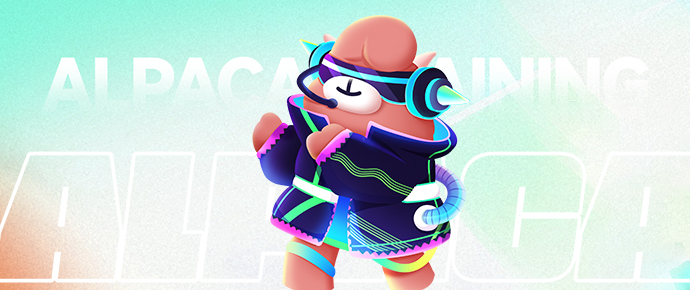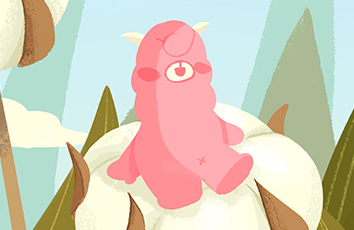剑桥雅思17一共收集了雅思真题4套,下文羊驼小编整理了剑雅17第二套阅读真题原文Test 2 Reading Passage,以下是阅读部分第二篇文章Passage 2的文章原文及参考译文,供各位烤鸭们复习参考。想要了解更多关于剑雅17听力和阅读真题答案及解析的考生可查看剑桥雅思17听力阅读真题答案及解析汇总,为助力各位烤鸭们备考雅思,羊驼教育雅思APP推出剑桥雅思真题及答案解析视频,可在羊驼雅思APP课程一栏获取剑桥雅思系列的视频信息。

剑雅17 Test 2 Passage1阅读1-13题解析请查看剑雅17 Test2阅读第14-18段落信息匹配题答案解析、剑雅17 Test2阅读第19-23人名观点匹配题答案解析和剑雅17 Test2阅读第24-26填空题答案解析
READING PASSAGE 2
You should spend about 20 minutes on Questions 14–26, which are based on Reading Passage 2 below.
A second attempt at domesticating the tomato
A It took at least 3,000 years for humans to learn how to domesticate the wild tomato and cultivate it for food. Now two separate teams in Brazil and China have done it all over again in less than three years. And they have done it better in some ways, as the re-domesticated tomatoes are more nutritious than the ones we eat at present.
This approach relies on the revolutionary CRISPR genome editing technique, in which changes are deliberately made to the DNA of a living cell, allowing genetic material to be added, removed or altered. The technique could not only improve existing crops, but could also be used to turn thousands of wild plants into useful and appealing foods. In fact, a third team in the US has already begun to do this with a relative of the tomato called the groundcherry.
This fast-track domestication could help make the world’s food supply healthier and far more resistant to diseases, such as the rust fungus devastating wheat crops.
‘This could transform what we eat,’ says Jorg Kudla at the University of Munster in Germany, a member of the Brazilian team. ‘There are 50,000 edible plants in the world, but 90 percent of our energy comes from just 15 crops.’
‘We can now mimic the known domestication course of major crops like rice, maize, sorghum or others,’ says Caixia Gao of the Chinese Academy of Sciences in Beijing. ‘Then we might try to domesticate plants that have never been domesticated.’
B Wild tomatoes,which are native to the Andes region in South America, produce pea-sized fruits. Over many generations, peoples such as the Aztecs and Incas transformed the plant by selecting and breeding plants with mutations* in their genetic structure, which resulted in desirable traits such as larger fruit.
But every time a single plant with a mutation is taken from a larger population for breeding, much genetic diversity is lost. And sometimes the desirable mutations come with less desirable traits. For instance, the tomatostrains grown for supermarkets have lost much of their flavour.
By comparing the genomes of modern plants to those of their wild relatives,biologists have been working out what genetic changes occurred as plants were domesticated. The teams in Brazil and China have now used this knowledge to reintroduce these changes from scratch while maintaining or even enhancing the desirable traits of wild strains.
C Kudla’s team made six changes altogether. For instance, they tripled the size of fruit by editing a gene called FRUIT WEIGHT, and increased the number of tomatoes per truss by editing another called MULTIFLORA.
While the historical domestication of tomatoes reduced levels of the red pigment lycopene – thought to have potential health benefits – the team in Brazil managed to boost it instead. The wild tomato has twice as much lycopene as cultivated ones; the newly domesticated one has five times as much.
‘They are quite tasty,’ says Kudla. ‘A little bit strong. And very aromatic.’
The team in China re-domesticated several strains of wild tomatoes with desirable traits lost in domesticated tomatoes. In this way they managed to create a strain resistant to a common disease called bacterial spot race, which can devastate yields. They also created another strain that is more salt tolerant – and has higher levels of vitamin C.
D Meanwhile, Joyce Van Eck at the Boyce Thompson Institute in New York state
decided to use the same approach to domesticate the groundcherry or goldenberry (Physalis pruinosa) for the first time. This fruit looks similar to the closely related Cape gooseberry (Physalis peruviana).
Groundcherries are already sold to a limited extent in the US but they are hard to produce because the plant has a sprawling growth habit and the small fruits fall off the branches when ripe. Van Eck’s team has edited the plants to increase fruit size, make their growth more compact and to stop fruits dropping. ‘There’s potential for this to be a commercial crop,’ says Van Eck. But she adds that taking the work further would be expensive because of the need to pay for a licence for the CRISPR technology and get regulatory approval.
E This approach could boost the use of many obscure plants, says Jonathan Jones of the Sainsbury Lab in the UK. But it will be hard for new foods to grow so popular with farmers and consumers that they become new staple crops, he thinks.
The three teams already have their eye on other plants that could be ‘catapulted into the mainstream’, including foxtail, oat-grass and cowpea. By choosing wild plants that are drought or heat tolerant, says Gao, we could create crops that will thrive even as the planet warms.
But Kudla didn’t want to reveal which species were in his team’s sights, because CRISPR has made the process so easy. ‘Any one with the right skills could go to their lab and do this.’
参考译文
培育番茄的二次尝试
A 人类至少花了3000年时间才学会如何培育野生西红柿并将其种植为食物。现 在巴西和中国的两个独立团队在不到三年的时间里再次完成了这项工作。他们在 一些方面甚至做得更好,因为重新培育的番茄比我们现在吃的番茄更有营养。
这种方法依赖于革命性的CRISPR 基因组编辑技术,即故意对活细胞的DNA 进 行改变,允许增加、删除或改变遗传物质。这项技术不仅可以改良现有的作物, 还可以用来把成千上万的野生植物变成有用的和有吸引力的食物。事实上,美国 的第三个研究小组已经开始对番茄的一个近亲———groundcherry进行这种研究。
这种快速的驯养有助于使世界的粮食供应更加健康,并大大增强对疾病的抵抗力, 例如破坏小麦作物的锈病。
‘这可能改变我们的饮食,"德国明斯特大学的Jorg Kudla说,他是巴西研究小组 的成员。’世界上有5万种可食用的植物,但我们90%的能源仅来自15种作物。
北京中国科学院的高彩霞说:"我们现在可以模拟水稻、玉米、高粱等主要作物 的已知驯养过程。然后我们可能会尝试培育那些从未被驯化过的植物。
B 野生西红柿,原产于南美洲安第斯山脉地区,能结出豌豆大小的果实。几代人 以来,阿兹特克人和印加人等通过选择和培育基因结构发生突变的植物来改造植 物,从而获得了理想的性状,如更大的果实。
但是,每当从更大的种群中抽取一株有突变的植物进行育种时,许多遗传多样性 就会丧失。有时,理想的突变会带来不太理想的特性。例如,为超市种植的西红 柿品系已经失去了大部分风味。
通过将现代植物的基因组与它们的野生近缘植物的基因组进行比较,生物学家一 直在研究植物被驯养时发生了哪些遗传变化。巴西和中国的研究小组现在利用这 些知识从头开始重新引入这些变化,同时保持甚至增强野生植株的理想性状。
C Kudla的团队总共做了六项改变。例如,他们通过编辑 一个名为FRUIT WEIGHT 的基因,使果实的大小增加了两倍,并通过编辑另 一 个名为 MULTIFLORA 的基因,增加了每个桁架的番茄数量。
虽然历史上对西红柿的驯养降低了番茄红素的含量--被认为具有潜在的健康益 处--但巴西的研究小组反而设法提高了它的含量。野生西红柿的番茄红素含量是 栽培西红柿的两倍;新驯养的西红柿则是它的五倍。
它们相当美味,'Kudl a 说。'有一点烈。非常香。
中国的研究小组重新驯养了几株野生西红柿,具有在驯养西红柿中丧失的理想特 性。通过这种方式,他们成功地创造出了一种对一种叫做细菌斑点种族的常见病
具有抗性的品种,这种病可以破坏产量。他们还创造了另一个更耐盐的品系,具 有更高的维生素C 含量。
D 与此同时,纽约州Boyce Thompson研究所的Joyce Van Eck决定使用同样的 方法,首次驯养groundcherry 或 Physalis pruinosa。这种水果看起来类似近亲角 醋栗 (Physalis peruviana)。
Groundcherries 已经在美国有限度地销售,但它们很难生产,因为这种植物有一 个蔓延的生长习性,成熟的小果实会从树枝上掉下来。 Van Eck的团队已经对植 物进行了编辑,以增加果实的大小,使其生长更加紧凑,并防止果实掉落。Van Eck 说:"这有可能成为一种经济作物。’但她补充说,由于需要支付CRISPR 技术的 许可证并获得监管部门的批准,进一步开展这项工作的成本很高。
E 英 国Sainsbury 实验室的 Jonathan Jones说,这种方法可以促进许多鲜为人知的 植物的使用。但他认为,新食品很难成为新的主食作物受到农民和消费者的欢迎。
这三个团队已经注意到了其他可能"进入主流"的植物,包括狐尾草、燕麦草和 豇豆。高说,通过选择耐旱或耐热的野生植物,我们可以创造出即使在地球变暖 的情况下也能茁壮成长的作物。
但 Kudla 不想透露他的团队的研究对象是哪些物种,因为CRISPR 使这个过程变 得如此简单。'任何有合适技能的人都可以去他们的实验室做这个。




